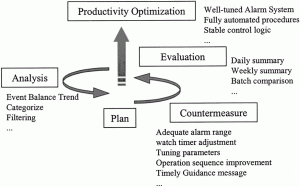This is from a series of articles reprinted from the journal ISA Transactions. All ISA Transactions articles are free to ISA members, or can be purchased from Elsevier Press.
Abstract: While it is widely recognized that total quality is a cost problem for production systems, it is less well recognized that alarm system efficiency is also an important cost problem. Practically, a well-designed alarm system is an essential tool in to maintain effective plant operations. Poorly designed alarm systems cause unnecessary disturbances, a waste of resources, and decreased plant operability. All of these adversely impact product quality and cost efficiency. Ongoing production system changes and enhancements typically increase the number of potential alarms. They are added to the existing alarm trip points, which are usually kept originally designed. This causes an ever-increasing number of alarms to be generated. On the other hand, the number of operators is usually kept the same or is even reduced for the requirements of the cost control. This results in an increasing number of alarms for each operator to handle, thereby worsening total productivity. It is important to evaluate repeatedly how operators react to the alarms. Alarm system efficiency can be evaluated by capturing when, where, and how frequently alarm messages are generated, and by comparing how operators respond to them. It is also important to analyze statistically the efficiency for each part of a facility or each product in order to optimize a better alarm system.
Free Bonus: To read the full article on alarm system optimization, click here.
ISA membership entitles you to free access to all ISA Transactions articles plus a wealth of technical content, industry information, free webinars, training opportunities, program discounts, certification and licensure and professional networking.
Join ISA ... learn, advance, succeed!





